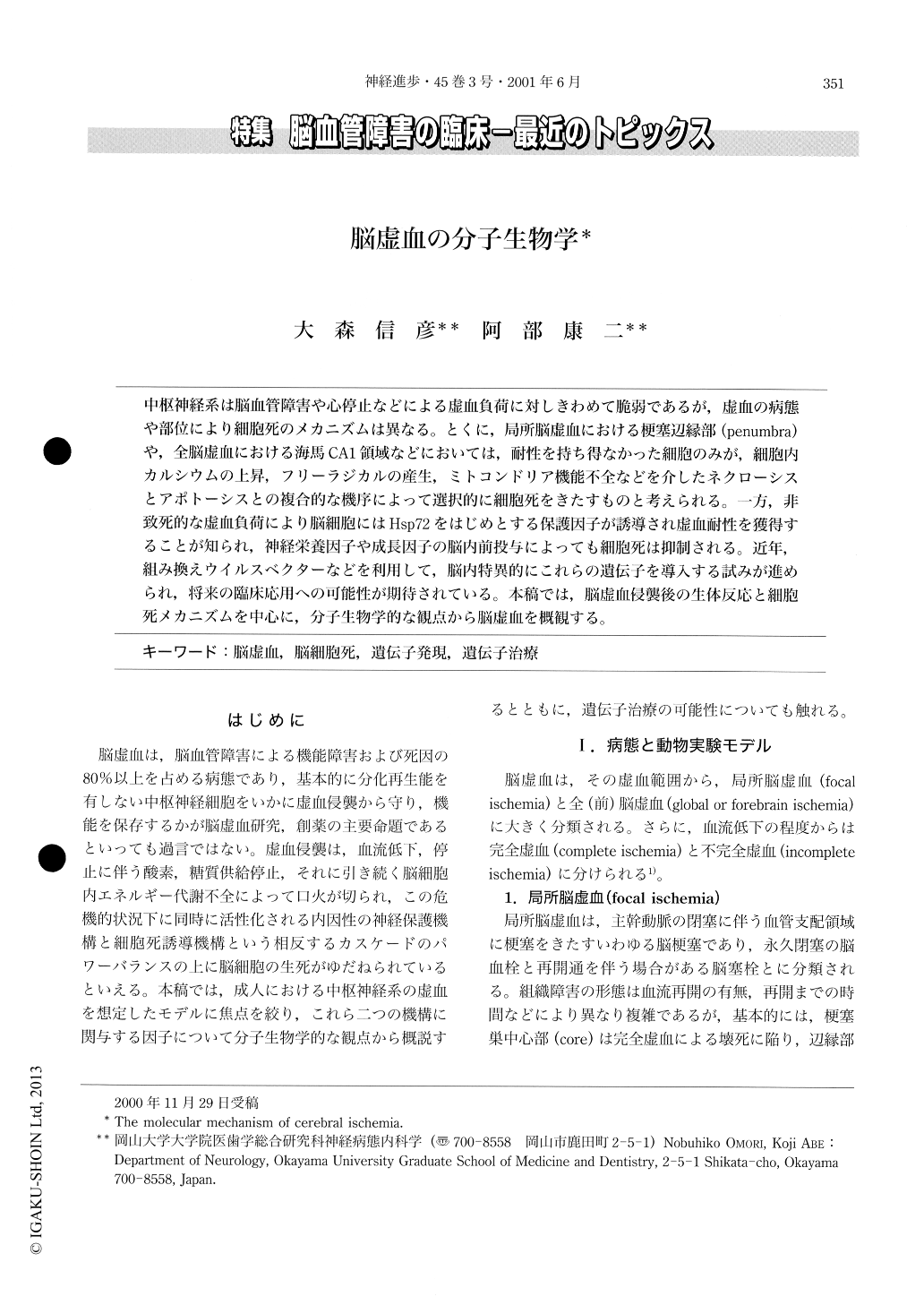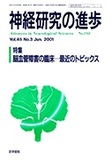Japanese
English
- 有料閲覧
- Abstract 文献概要
- 1ページ目 Look Inside
中枢神経系は脳血管障害や心停止などによる虚血負荷に対しきわめて脆弱であるが,虚血の病態や部位により細胞死のメカニズムは異なる。とくに,局所脳虚血における梗塞辺縁部(penumbra)や,全脳虚血における海馬CA1領域などにおいては,耐性を持ち得なかった細胞のみが,細胞内カルシウムの上昇,フリーラジカルの産生,ミトコンドリア機能不全などを介したネクローシスとアポトーシスとの複合的な機序によって選択的に細胞死をきたすものと考えられる。一方,非致死的な虚血負荷により脳細胞にはHsp72をはじめとする保護因子が誘導され虚血耐性を獲得することが知られ,神経栄養因子や成長因子の脳内前投与によっても細胞死は抑制される。近年,組み換えウイルスベクターなどを利用して,脳内特異的にこれらの遺伝子を導入する試みが進められ,将来の臨床応用への可能性が期待されている。本稿では,脳虚血侵襲後の生体反応と細胞死メカニズムを中心に,分子生物学的な観点から脳虚血を概観する。
Stroke remains one of the major causes of death and disability in the world and more than 80% of all strokes are a result of cerebral ischemia. Central nervous system is quite vulnerable against ischemic insults and the mechanism of cell death varies depending on hemodynamics and cell types in the brain. Cerebral ischemia activates complex genetic programs that result in the sequential expression of a large number of genes coding such as immediate early genes, heat shock proteins, adhesion molecules, cytokines, inflammation/apoptosis related genes and neurotrophic factors.

Copyright © 2001, Igaku-Shoin Ltd. All rights reserved.


